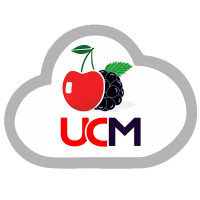Automated Calling Software: Updating Communication

Strong 8k brings an ultra-HD IPTV experience to your living room and your pocket.
In today's fast-paced world, businesses are constantly seeking ways to streamline their operations and enhance communication with customers. One such technology that has gained significant traction is automated calling software. This article explores the ins and outs of Automated Calling Software, its benefits, challenges, and future trends.
How Automated Calling Software Works
Automated calling software, also known as autodialers or robocalls, is a technology that enables businesses to automate outbound calls to a large number of recipients simultaneously. These calls can be pre-recorded messages or dynamically generated based on certain triggers.
Types of Automated Calling Systems
There are two main types of automated calling systems: predictive dialers and power dialers. Predictive dialers use algorithms to predict when agents will be available to handle calls, while power dialers dial a predetermined list of numbers at a constant pace.
Key Features of Automated Calling Software
Automated calling software typically offers features such as call scheduling, call recording, interactive voice response (IVR), and integration with customer relationship management (CRM) systems.
Benefits of Automated Calling Software
Time Efficiency
One of the primary benefits of automated calling software is its ability to save time for businesses by eliminating the need for manual dialing. This allows employees to focus on more value-added tasks.
Cost Savings
Automated calling software can also lead to cost savings for businesses by reducing the need for additional manpower and resources. It enables companies to reach a large number of customers at a fraction of the cost of traditional calling methods.
Increased Productivity
By automating repetitive tasks such as dialing and call logging, automated calling software can significantly increase productivity levels within an organization. Employees can handle a higher volume of calls in less time.
Industries Using Automated Calling Software
Automated calling software is widely used across various industries, including:
Telemarketing and Sales: Businesses can use automated calling software to reach out to potential customers and promote their products or services.
Customer Service and Support: Automated calling software can facilitate proactive customer support by sending out reminders, notifications, and surveys.
Healthcare: Healthcare providers use automated calling software for appointment reminders, medication adherence programs, and patient outreach initiatives.
Education: Educational institutions leverage automated calling software for attendance notifications, emergency alerts, and parent-teacher communications.
Factors to Consider When Choosing Automated Calling Software
When selecting automated calling software for your business, consider the following factors:
Scalability: Ensure that the software can scale with your business as it grows.
Integration with Existing Systems: Choose a solution that seamlessly integrates with your existing CRM or communication systems.
Compliance with Regulations: Make sure the software complies with relevant regulations, such as the Telephone Consumer Protection Act (TCPA) and General Data Protection Regulation (GDPR).
Customization Options: Look for software that offers customization options to tailor the calling experience to your specific needs.
Best Practices for Using Automated Calling Software
To maximize the effectiveness of automated calling software, follow these best practices:
Personalization: Customize messages to make them relevant to each recipient.
Opt-In and Opt-Out Mechanisms: Provide clear opt-in and opt-out mechanisms to ensure compliance and respect recipients' preferences.
Testing and Optimization: Continuously test and optimize your calling campaigns to improve performance and ROI.
Challenges and Limitations of Automated Calling Software
While automated calling software offers numerous benefits, it also comes with its own set of challenges and limitations:
Potential for Spamming: Overuse of automated calling software can lead to recipient fatigue and complaints of spamming.
Lack of Human Interaction: Automated calls lack the personal touch of human interaction, which can affect customer satisfaction.
Technical Issues: Software glitches and technical errors can disrupt calling campaigns and impact reliability.
Future Trends in Automated Calling Software
The future of automated calling software looks promising, with advancements in technology driving innovation in the following areas:
AI and Machine Learning Integration: AI-powered algorithms can analyze call data to improve targeting and message personalization.
Enhanced Analytics and Reporting: Advanced analytics tools provide deeper insights into calling campaigns, allowing businesses to make data-driven decisions.
Conclusion
Automated Calling Software has revolutionized the way businesses communicate with customers, offering a cost-effective and efficient solution for outbound calling campaigns. By understanding its benefits, challenges, and best practices, businesses can harness the power of automated calling software to enhance their communication strategies and drive success.
Unique FAQs
Is automated calling software legal?
Yes, automated calling software is legal, but businesses must comply with regulations such as the TCPA and GDPR to avoid legal issues.
Can automated calling software be used for emergency notifications?
Yes, many automated calling software solutions offer emergency notification features, allowing businesses to quickly communicate important information to stakeholders.
How can businesses prevent their automated calls from being flagged as spam?
To avoid being flagged as spam, businesses should ensure that their calling campaigns are targeted, and relevant, and provide clear opt-in and opt-out mechanisms for recipients.
What is the difference between predictive dialers and power dialers?
Predictive dialers use algorithms to predict when agents will be available to handle calls, while power dialers dial a predetermined list of numbers at a constant pace.
How can businesses measure the effectiveness of their automated calling campaigns?
Businesses can measure the effectiveness of their automated calling campaigns by tracking key metrics such as call completion rates, conversion rates, and customer feedback.
Note: IndiBlogHub features both user-submitted and editorial content. We do not verify third-party contributions. Read our Disclaimer and Privacy Policyfor details.




